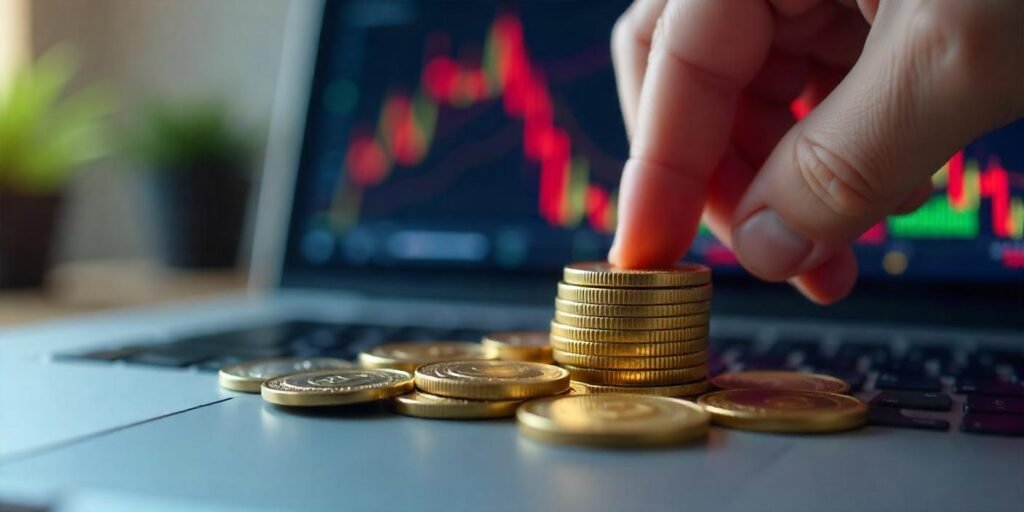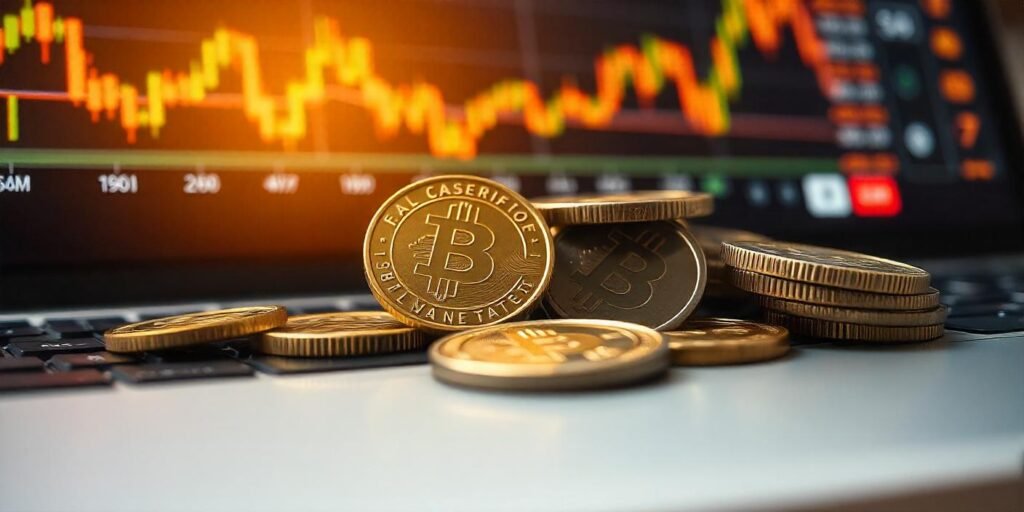Investing in precious metals like gold, silver, and platinum has long been viewed as a haven, especially during times of economic uncertainty. While these metals can provide a solid store of value, it’s essential to recognize the risks associated with investing in them. In this article, we’ll explore the key risks to help investors make informed decisions. If you’re just starting, check out our guide on How to Create a Personalized Investment Plan to better understand how precious metals can fit into your overall strategy.

Why Are Precious Metals Seen as a Safe Investment?
Precious metals have historically been a hedge against inflation and a reliable asset in economic downturns. Unlike stocks and bonds, they are tangible assets, meaning they are not tied to the performance of companies or governments. However, just like any other investment, they come with their own set of challenges.
What Are the Main Risks of Investing in Precious Metals?
1. Market Volatility: How Stable Are Precious Metals?
Precious metals may seem like a stable investment, but they are subject to significant price swings. The prices of gold, silver, and other metals can fluctuate based on several factors, including global economic conditions, interest rates, and market sentiment.
To understand how to navigate volatile markets, you might want to learn more about Why Financial Goals Matter When Investing.

2. Lack of Income Generation: Can Precious Metals Provide Passive Income?
Unlike stocks or real estate, which may provide dividends or rental income, precious metals do not generate any passive income. The only way to profit from them is through price appreciation, which depends on market demand.
If you’re more interested in income-generating investments, you can explore alternatives in our guide on Innovative Business Ideas for Students.
3. Storage and Security: How Do You Keep Your Investments Safe?
One of the less-talked-about risks is the issue of storing physical precious metals. Gold bars, silver coins, and other tangible assets require secure storage, which often means paying for vaults, safes, or insurance.

To minimize storage risks, you might consider virtual assets, and you can read more about modern remote income ideas in Social Media Marketing for Virtual Assistants.
4. Liquidity Issues: How Easy Is It to Sell Precious Metals?
While precious metals are widely recognized, they aren’t always easy to sell at the desired price. Liquidating large amounts of gold or silver might take time, and finding a buyer willing to pay market value can be challenging.
Looking for a flexible investment? Consider exploring how to Market Your Services Online to gain more insight into more liquid opportunities.
5. Counterfeit and Fraud Risk: Are Your Metals Genuine?
The market for precious metals is not immune to fraud. Counterfeit gold bars or silver coins can be a severe problem, especially for inexperienced buyers. Purchasing from unverified sources can lead to significant losses if the metals turn out to be fake or impure.
6. No Interest or Dividends: What Are the Opportunity Costs?
When you invest in precious metals, you’re choosing not to invest in other assets like stocks or bonds that could potentially offer higher returns. This opportunity cost can be a significant risk for long-term investors.
For those curious about maximizing return potential, check out our article on Strategies to Get Clients, which focuses on growth strategies that don’t carry the same risks as precious metals.
Should You Invest in Precious Metals?
Given these risks, is investing in precious metals still a good idea? The answer depends on your investment goals. If you’re looking for diversification and a hedge against economic downturns, precious metals can play a valuable role in your portfolio. However, understanding and mitigating the risks is crucial to avoid potential pitfalls.
How Can You Manage the Risks of Investing in Precious Metals?
1. Diversification
One of the best ways to manage risk is through diversification. Don’t rely solely on precious metals for your portfolio. A balanced mix of stocks, bonds, and real estate can provide stability while allowing you to enjoy the benefits of precious metals as a hedge against inflation.
2. Investing in ETFs Instead of Physical Metals
To avoid storage and liquidity issues, some investors choose precious metal ETFs (exchange-traded funds) or mutual funds that invest in gold or silver. This allows you to gain exposure to metals without dealing with the hassle of physically owning and storing them.
3. Timing the Market
While it is impossible to time the market perfectly, keeping an eye on global economic indicators can help you make more informed decisions on when to buy or sell precious metals. Understanding market cycles and trends is essential in managing price volatility.

FAQs: Risks of Investing in Precious Metals
Are precious metals a safe investment?
While precious metals like gold and silver are considered relatively stable over the long term, they come with certain risks such as price volatility, liquidity issues, and storage costs. Understanding these risks is crucial before investing.
What are the main risks of investing in gold?
The primary risks include market volatility, fluctuating prices, storage and insurance costs, and potential liquidity challenges when selling gold quickly during market downturns.
Can precious metals lose their value?
Yes, precious metals can lose value due to market fluctuations, changes in demand, and shifts in the global economy. For example, a strong U.S. dollar or declining inflation could reduce the demand for gold, driving down its price.
How can I manage the risks of investing in precious metals?
Diversifying your investment portfolio, keeping a long-term perspective, and understanding the specific costs involved (such as storage fees) can help you manage risks. It’s also essential to align precious metals with your overall financial goals.
Are there safer alternatives to investing in precious metals?
If you’re concerned about the risks associated with precious metals, other investment options such as bonds, dividend-paying stocks, or real estate might offer lower risk, depending on your investment objectives.
Do I need to physically own gold to invest in it?
No, you can invest in gold through exchange-traded funds (ETFs), gold mining stocks, or gold certificates, which allow exposure to gold without needing to physically store it.
Why is liquidity a risk in precious metals investment?
Unlike stocks or bonds, selling physical precious metals like gold and silver can sometimes take longer, especially during periods of low demand. This can pose a challenge if you need immediate cash.
Should beginners invest in precious metals?
Beginners can invest in precious metals, but it’s important to start with a clear understanding of the risks and consult a financial advisor. Diversifying your portfolio and not putting all your funds into precious metals is a wise approach.

Gold as an Investment provides a comprehensive overview of gold as an investment, including its risks and benefits, making it a good source for readers wanting more detailed information.
Conclusion: Weighing the Rewards and Risks
Precious metals can be an excellent addition to an investment portfolio, but only if you understand the risks involved. Market volatility, lack of income generation, and liquidity issues are just a few of the challenges investors face. However, with the right strategies, such as diversification and staying informed, you can effectively manage these risks and make precious metals work to your advantage.
For more insights into smart investing, explore our detailed guide on Beginners Guide to Select a Profitable Online Business Niche, or read up on Time Management Strategies for Virtual Assistants, which offers tips that are relevant to managing time and assets effectively.